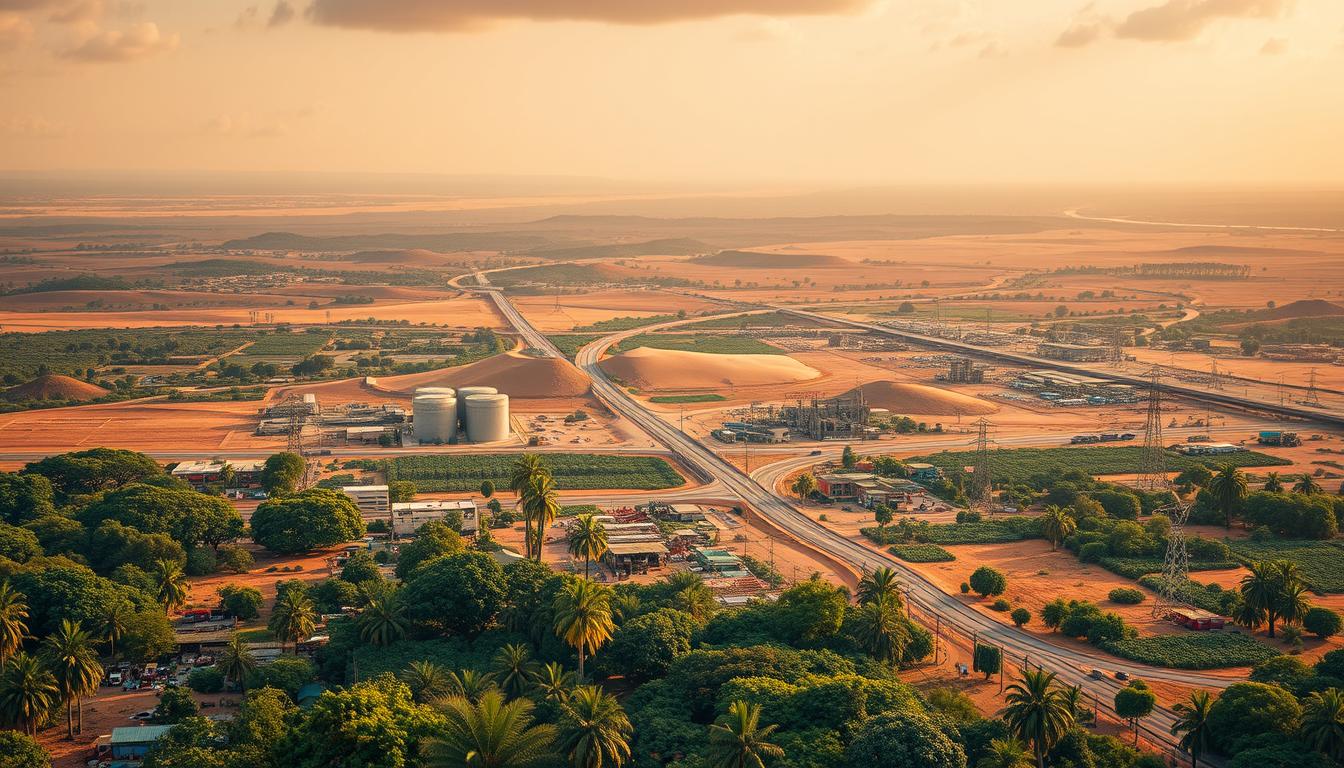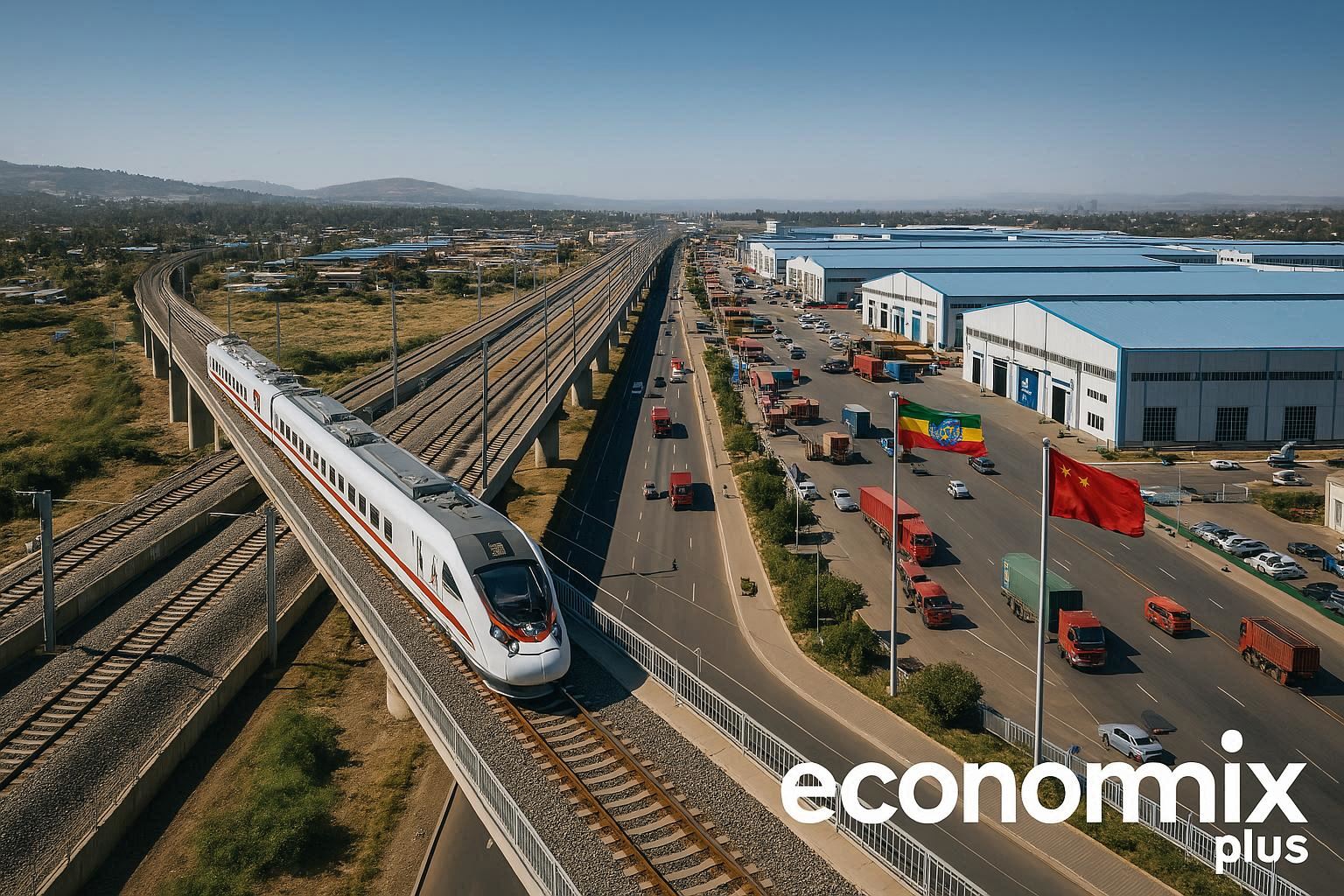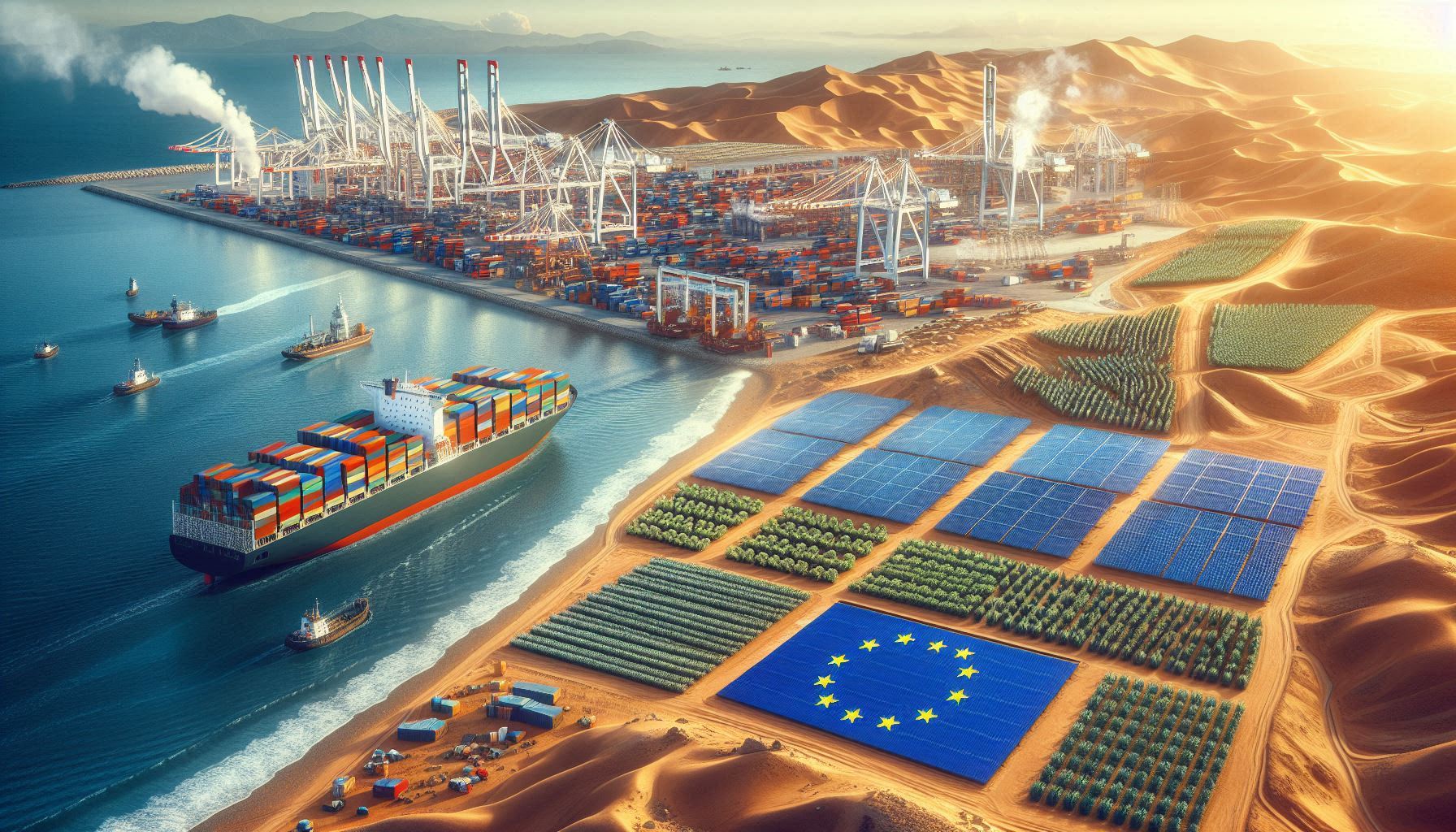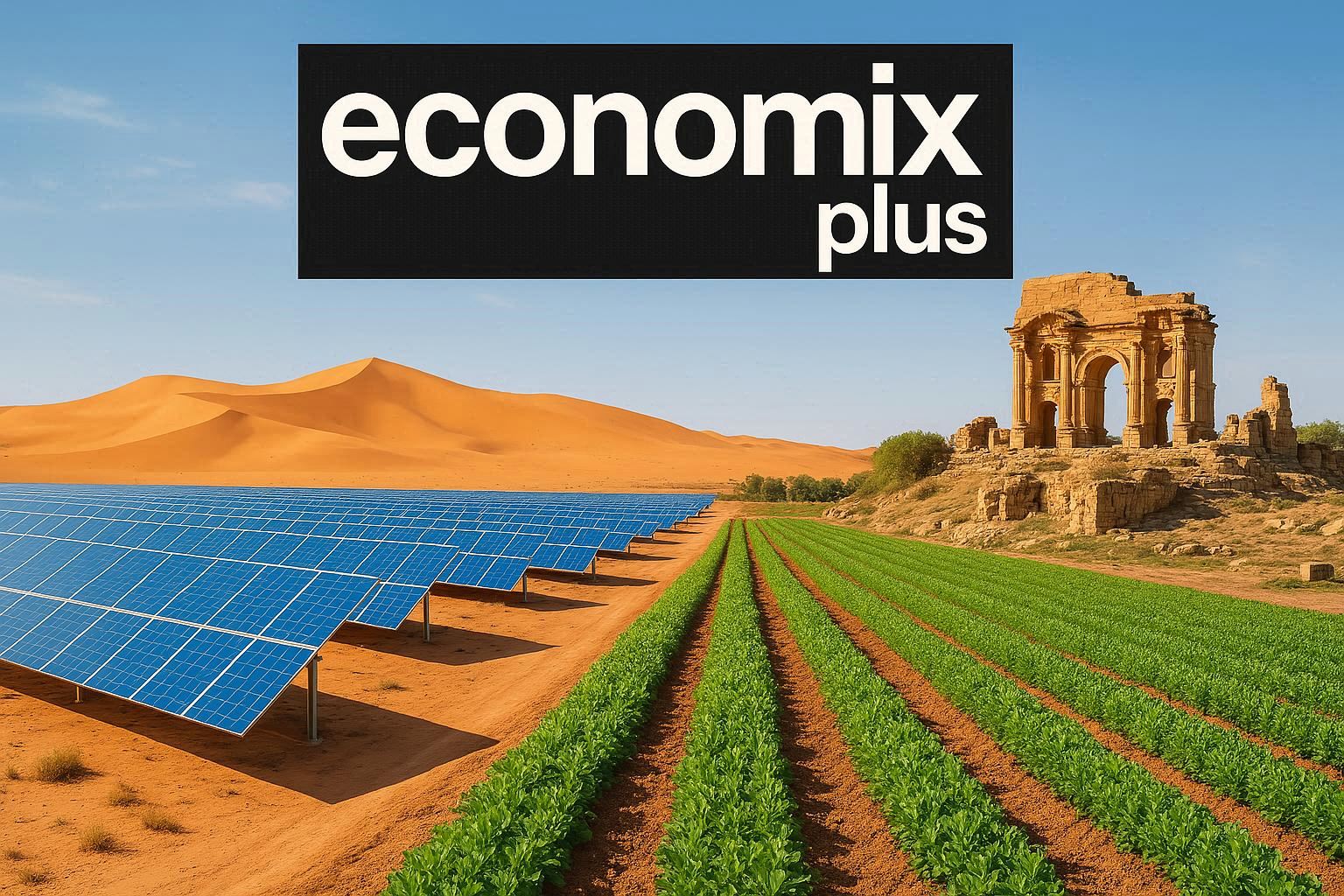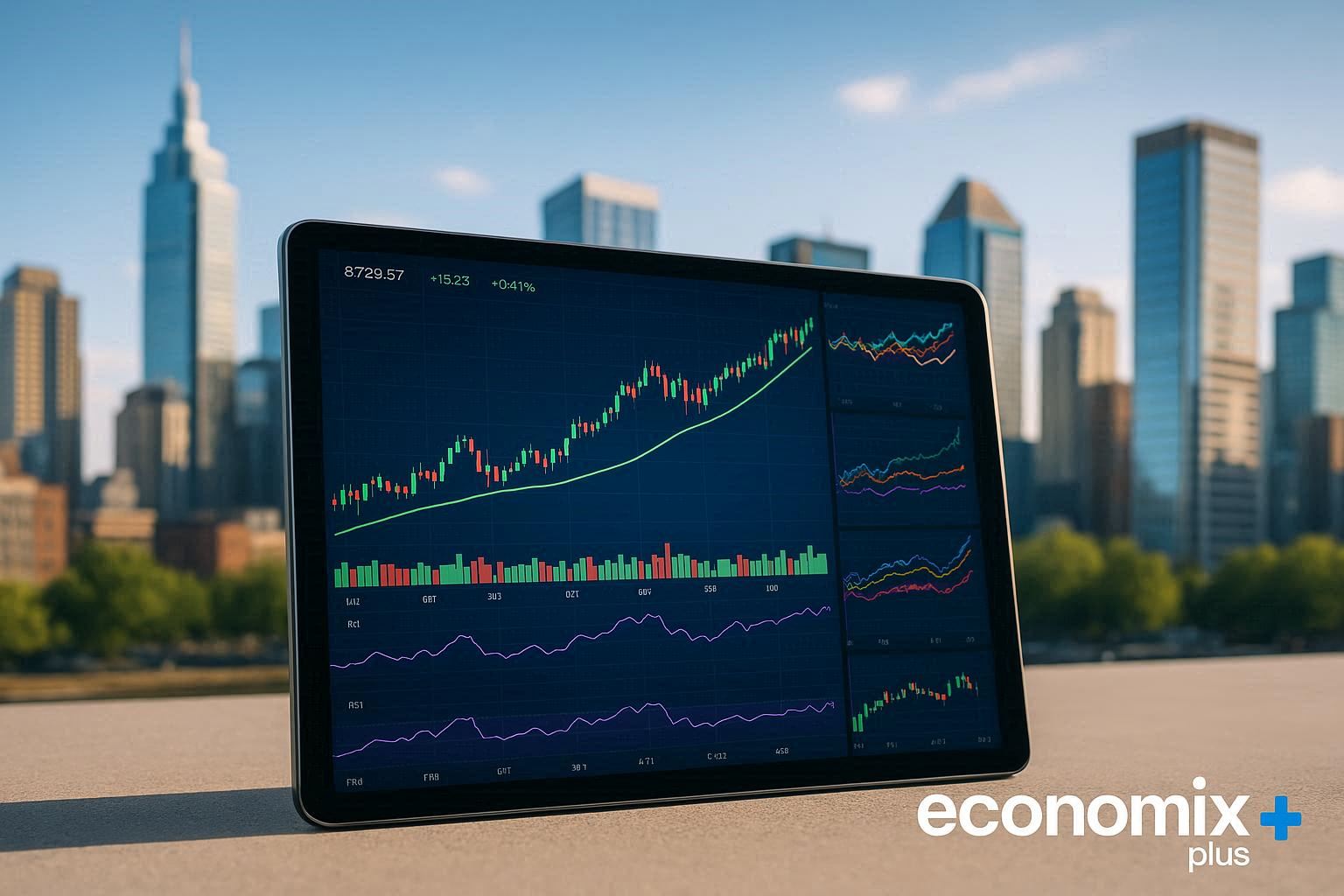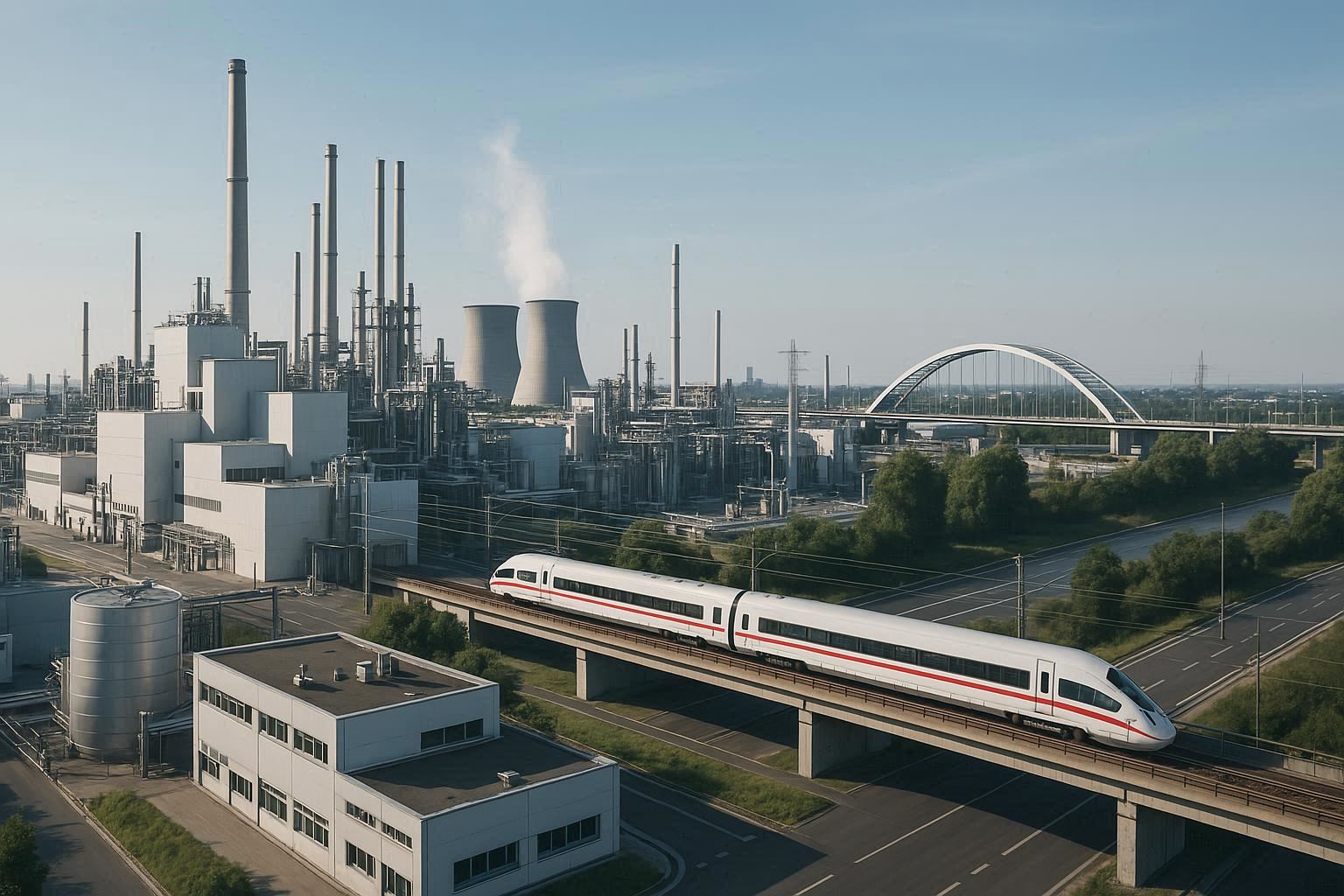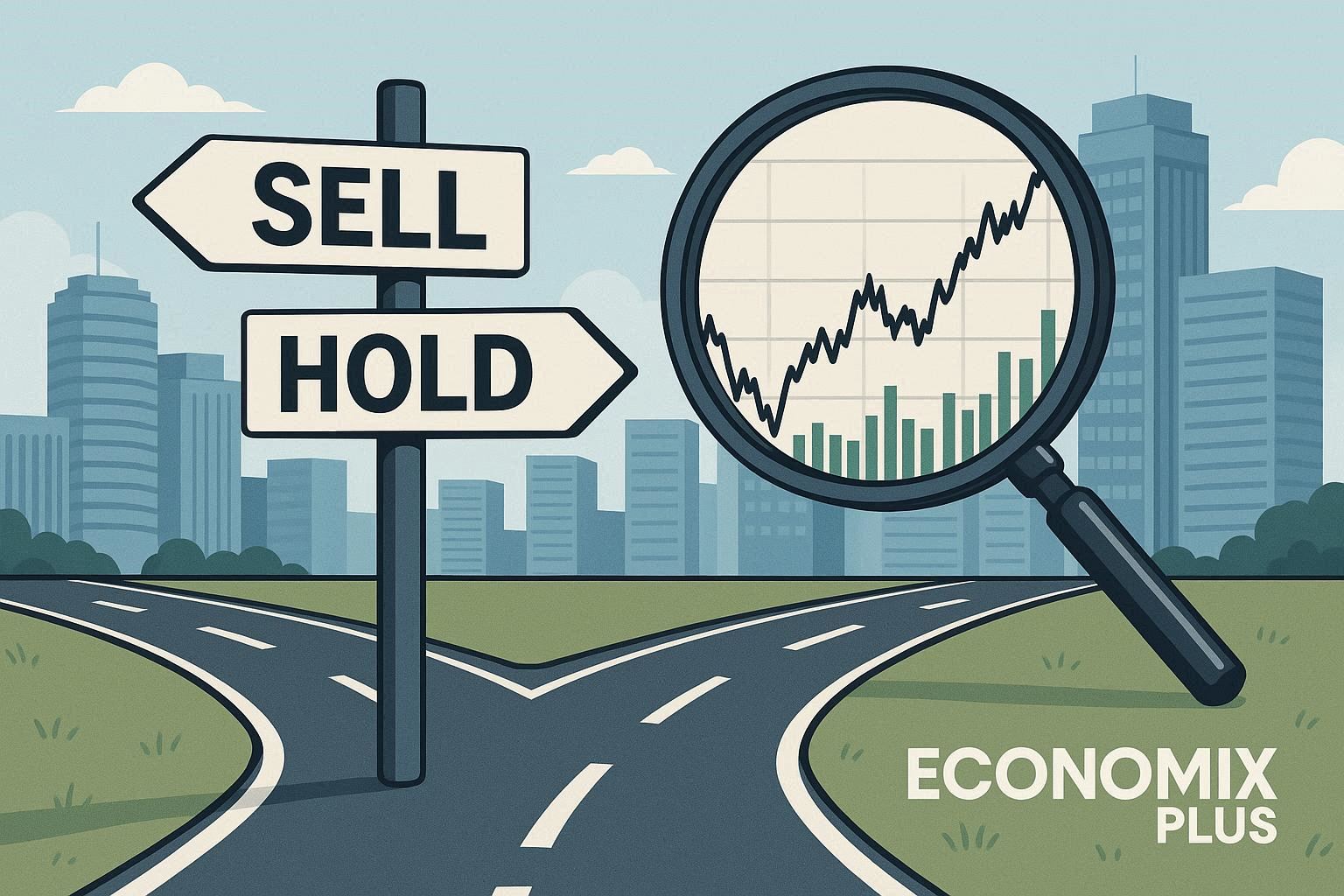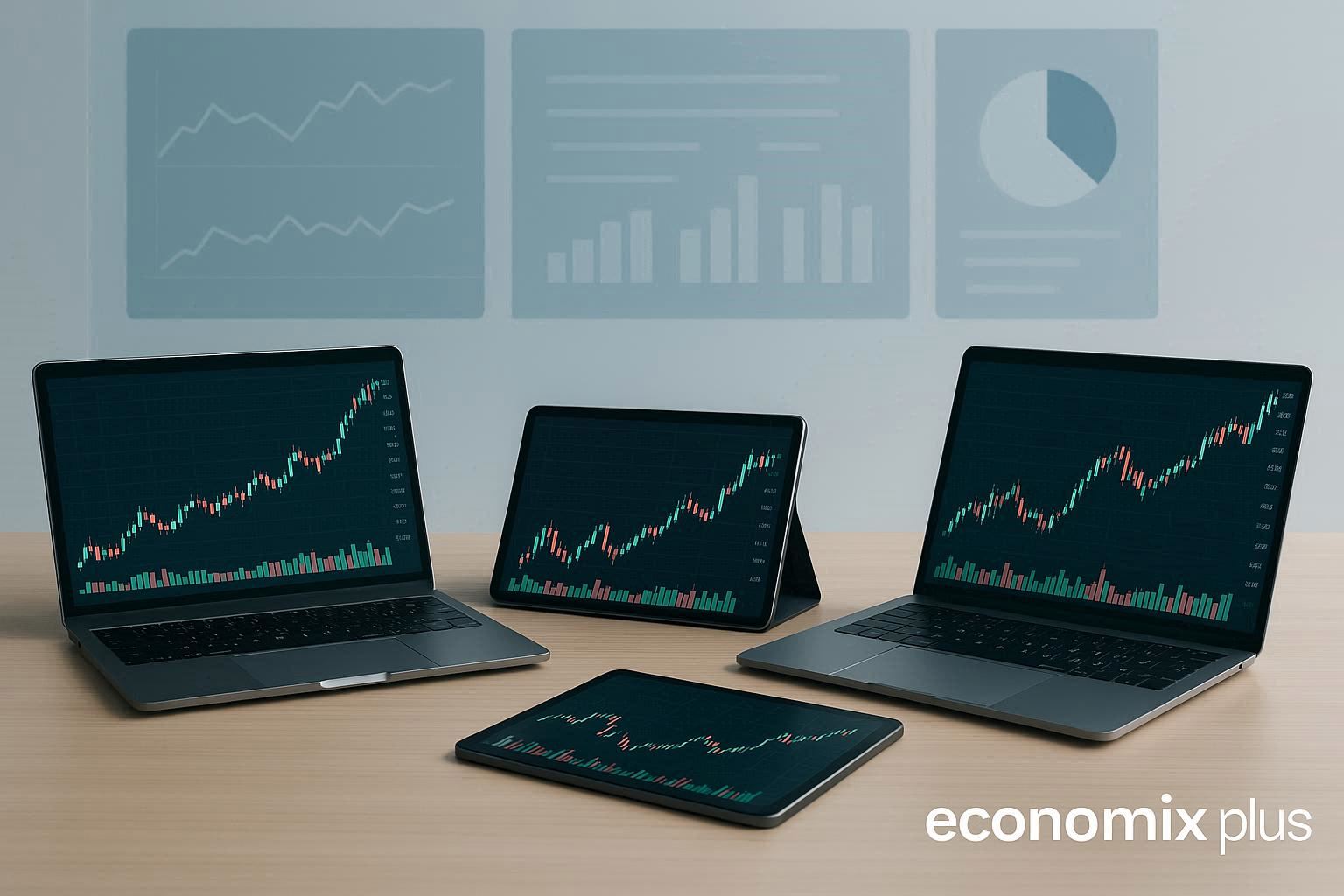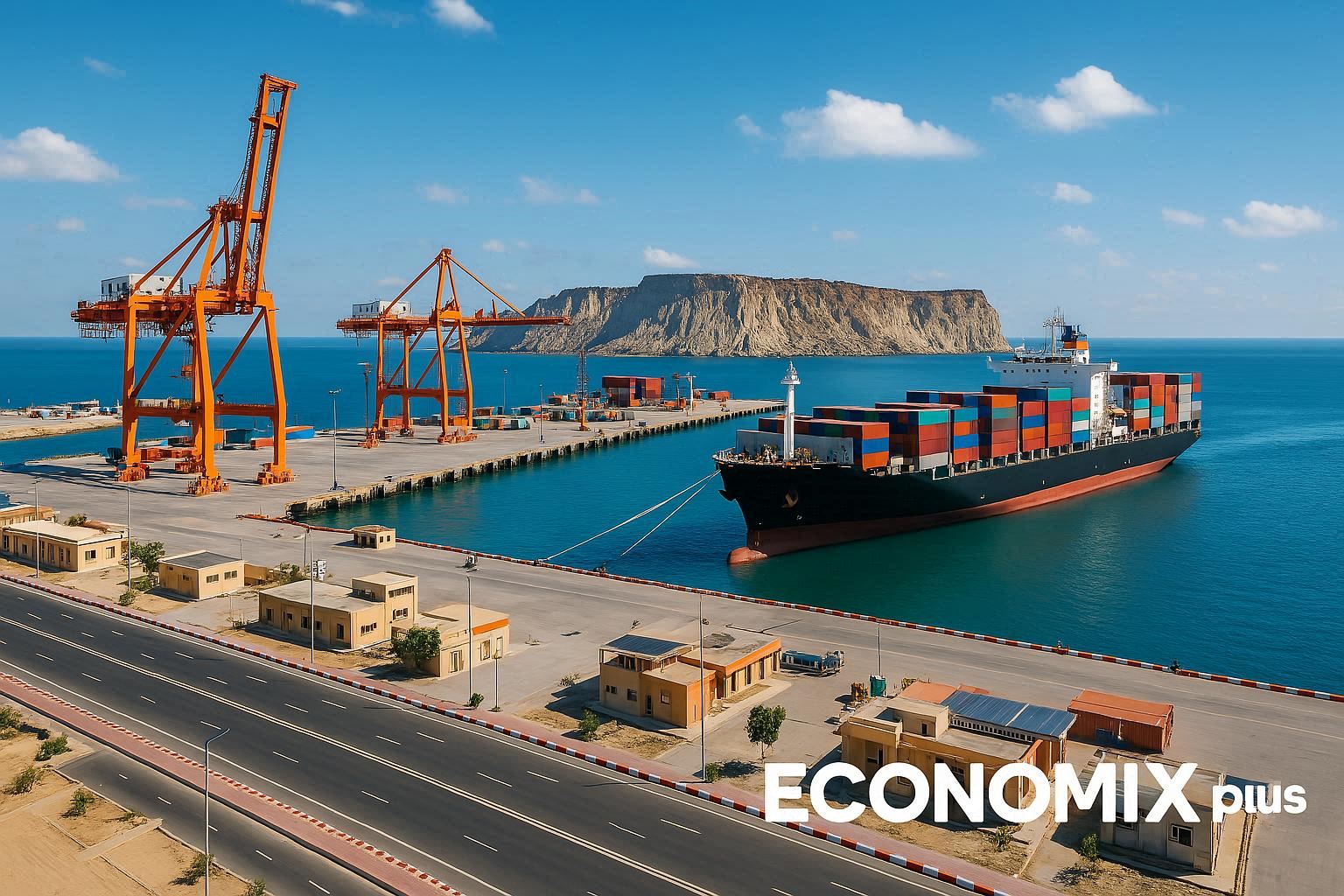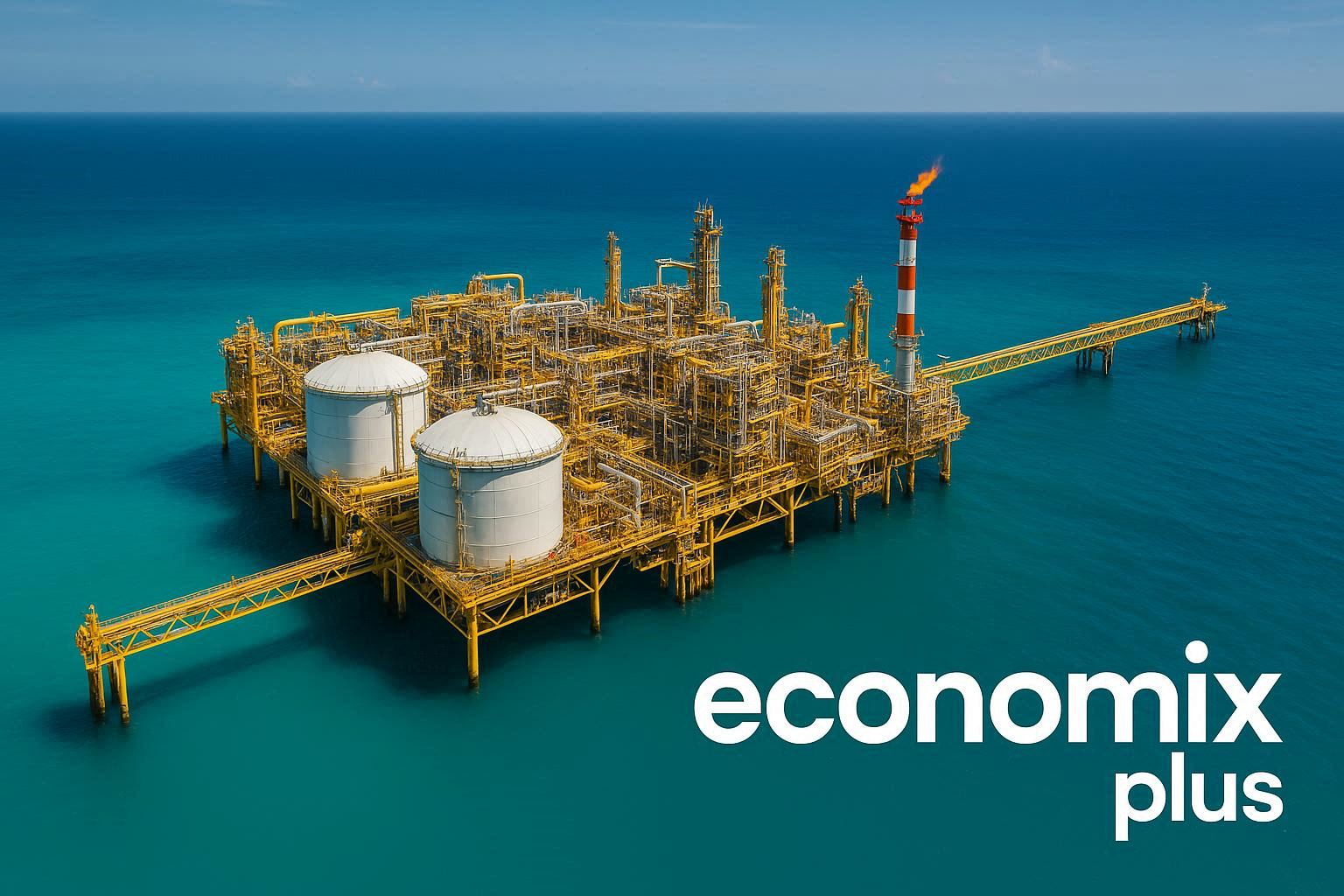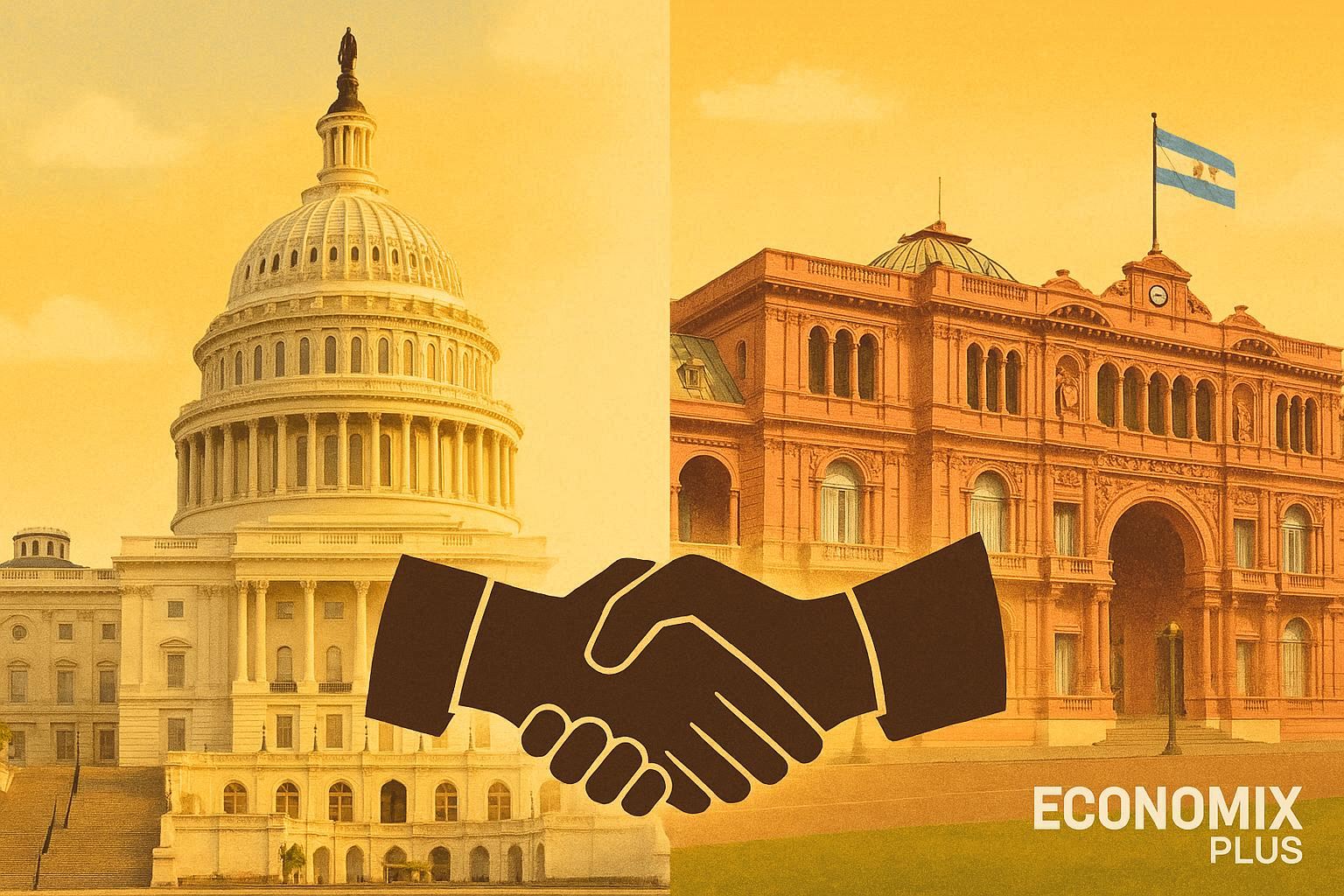Mali holds vast reserves of gold, cotton, and untapped arable land. Yet its economic trajectory remains uneven, with growth rates swinging unpredictably. Reports from the African Development Bank highlight a troubling pattern: even with natural wealth, the country faces persistent vulnerabilities. What forces keep such a resource-rich nation trapped in cycles of instability?
External shocks play a critical role. Global commodity price shifts and extreme weather events—like prolonged droughts—regularly disrupt Mali’s agricultural sector, which employs over 60% of its workforce. The International Monetary Fund notes that overreliance on raw material exports leaves the economy exposed to market volatility. Meanwhile, infrastructure gaps and governance challenges hinder diversification efforts.
This analysis explores the disconnect between potential and performance. It examines how climate risks, geopolitical tensions, and structural weaknesses undermine progress. Policymakers and development experts, particularly those focused on African markets, will find actionable insights into balancing resource wealth with sustainable strategies.
Key Takeaways
- Gold and agriculture dominate Mali’s economy but lack value-added processing.
- Climate shocks and global price swings create recurring instability.
- Infrastructure gaps limit diversification beyond primary resources.
- Governance reforms could strengthen resilience against external pressures.
- Case study findings offer lessons for resource-dependent nations worldwide.
Introduction and Context of Mali
As a landlocked nation in Africa’s Sahel region, Mali faces unique challenges that shape its development trajectory. The country spans three distinct ecological zones: the Sudanese south with fertile farmland, the semi-arid Sahelian center, and the Saharan north dominated by desert. These zones dictate livelihoods, with 80% of the population relying on rain-fed agriculture or pastoralism.
Urbanization accelerates as rural poverty drives migration to cities like Bamako. Over 45% of Malians now live in urban areas—a 15% jump in 20 years. Yet infrastructure struggles to keep pace, deepening inequalities between city dwellers and remote communities.
Membership in ECOWAS since 1975 positions Mali for regional trade, but political instability disrupts progress. Two coups since 2020 have strained international partnerships critical for development. Meanwhile, 44% of citizens live below the national poverty line, per World Bank data.
Understanding these dynamics explains why the country battles cyclical crises. Climate shocks in northern zones compound food insecurity, while rapid population growth—3% annually—intensifies pressure on limited resources. These factors create a complex web where poverty reduction requires multifaceted solutions.
Historical Overview of Mali’s Economic Development
Mali’s economic story begins with ancient trans-Saharan trade networks. Pre-colonial empires like Ghana and Mali leveraged gold and salt routes, creating wealth centers documented in 14th-century Arab chronicles. French colonization (1892-1960) shifted focus to cash crops, embedding export dependency that still lingers.
Post-independence governance strategies swung between socialism and liberalization. The 1980s structural adjustment programs forced state enterprise sell-offs, yet failed to build competitive industries. A World Bank study notes these reforms increased urban poverty by 12% within a decade.
“Mali’s economic trajectory mirrors its political instability – each regime change brings policy reversals that erase prior progress.”
Security crises repeatedly derailed development efforts. The 2012 northern rebellion and subsequent foreign military interventions drained 18% of annual GDP, per IMF reports. This table shows critical turning points:
| Period | Event | Economic Impact |
|---|---|---|
| 1960-1968 | Socialist policies | Nationalized key industries |
| 1991-1992 | Democratic transition | IMF structural adjustments |
| 2012-2013 | Tuareg rebellion | $300M in lost trade revenue |
| 2020-Present | Military governance | Frozen international aid |
Recent security partnerships with G5 Sahel nations aim to stabilize border regions. However, 2023 UN data shows extremist attacks still displace 500+ Malians weekly, disrupting farming and trade routes. These patterns reveal how historical governance choices and external shocks compound present-day fragility.
Ongoing development efforts prioritize mining sector modernization. Yet chronic underinvestment in education – only 2.3% of GDP – limits workforce readiness for value-added industries. This historical legacy explains why resource wealth hasn’t translated into broad-based growth.
Why is Mali’s economy considered fragile despite its diverse resources
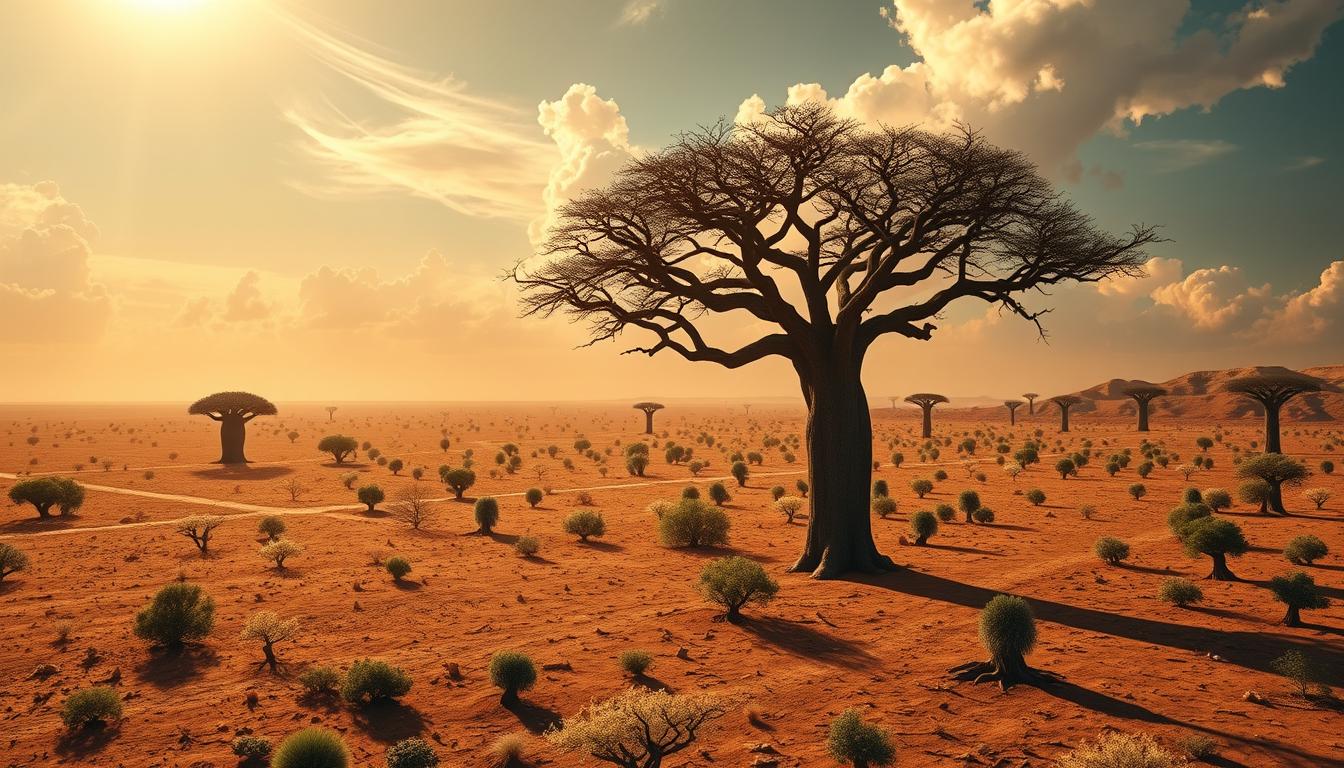
The paradox of abundant natural assets coexisting with chronic instability defines Mali’s economic reality. Insecurity in northern regions deters foreign investment, with FDI dropping 37% since 2020 according to IMF data. Koloma’s 2022 analysis reveals how weak institutions amplify external shocks—only 12% of crisis response funds reach intended beneficiaries due to governance gaps.
Three interconnected forces drive this fragility:
- Ongoing conflict zones disrupt 68% of agricultural trade routes
- Commodity price swings erase 9% of GDP annually during crisis periods
- Corruption investigations uncover $180M in misused development funds since 2018
Global gold price fluctuations demonstrate this vulnerability. When prices fell 15% in 2023, Mali lost $220 million in export revenue—equivalent to 14% of its national budget. Simultaneously, conflict-induced displacement forced 300,000 farmers from fertile southern lands, worsening food insecurity.
“Fragile institutions transform manageable challenges into systemic crises. Mali’s governance capacity scores 2.1/10 in World Bank assessments—below regional averages.”
This cycle of crisis and recovery prevents long-term planning. Upcoming sections explore how these institutional gaps intersect with poverty and climate pressures to deepen economic divides.
Socio-Economic Challenges and the Impacts of Poverty
Over four million Malians face extreme poverty daily, surviving on less than $2.15 per person. World Bank data reveals 44% live below the national poverty line, with rural communities bearing the heaviest burden. This deprivation creates systemic barriers to progress—malnutrition rates exceed 25% in southern farming regions, stunting workforce productivity and highlighting the poor performance of the economy. The impact of climate change further exacerbates these issues, affecting the access to essential services and security for vulnerable groups.
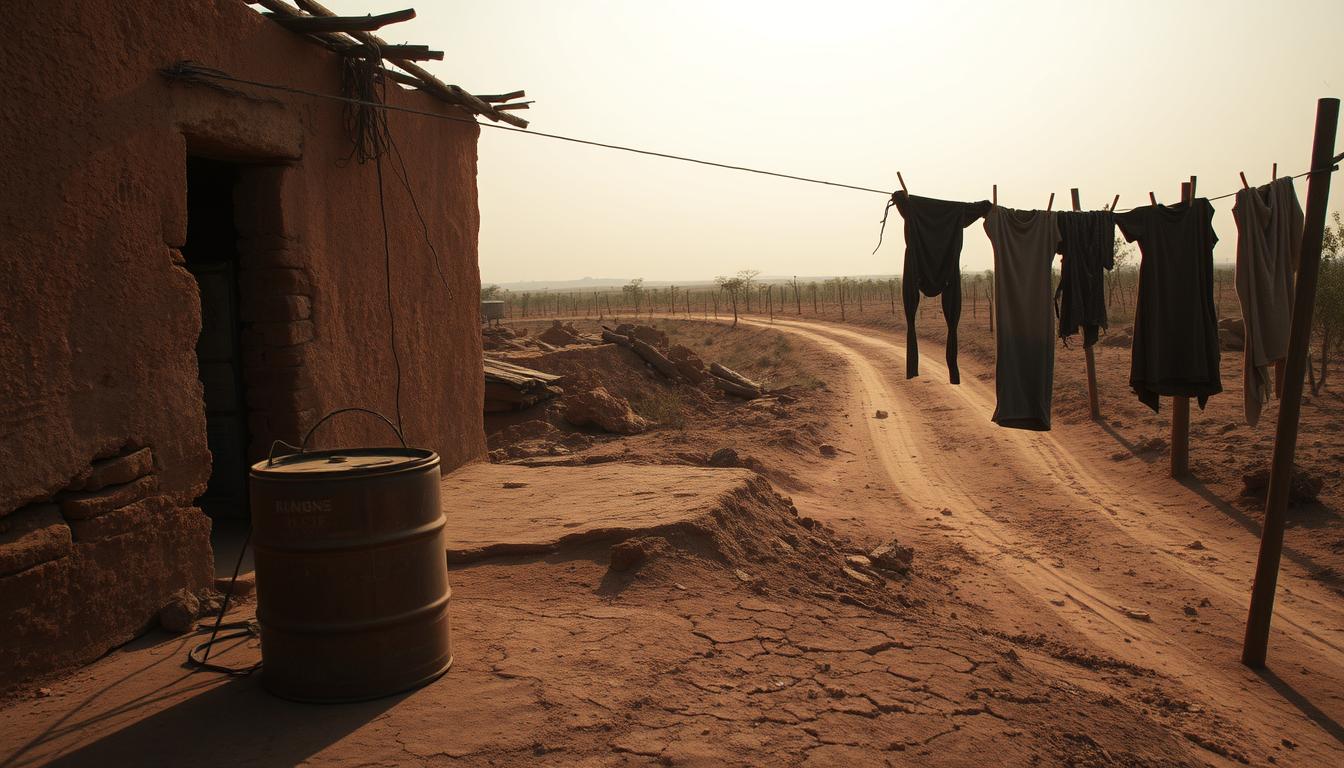
Vulnerable groups face compounding pressures. Only 35% of girls in northern Mali complete primary school, perpetuating intergenerational hardship. The state struggles to meet demand: healthcare spending covers just 12% of population needs, forcing families into debt for basic treatments.
Three critical sectors demonstrate poverty’s corrosive effects:
- Agriculture: 80% of smallholder farmers lack irrigation, losing 40% of crops to droughts
- Education: Teacher shortages leave 1.3 million children out of school
- Urban services: Slum populations grow 5% annually as rural migrants seek opportunities
“Poverty traps families in survival mode, diverting resources from innovation to immediate needs. Mali loses $900 million yearly in unrealized economic potential due to these constraints.”
These disparities fuel social tensions while draining public coffers—15% of tax revenue funds emergency food aid rather than infrastructure. Yet targeted investments show promise: literacy programs in Kayes Region boosted women’s incomes by 18% within two years. Such examples highlight pathways for meaningful change despite systemic challenges.
Climate Change and Environmental Pressures
Mali’s agricultural heartland shrinks as temperatures rise 1.8 times faster than the global average due to climate change. IPCC data shows annual rainfall decreased 30% since 1980 in northern Mali regions, while droughts now occur twice as often. These shifts directly threaten 12 million people relying on rain-fed farming, highlighting the country’s vulnerability to economic development challenges and security issues related to poverty and growth.
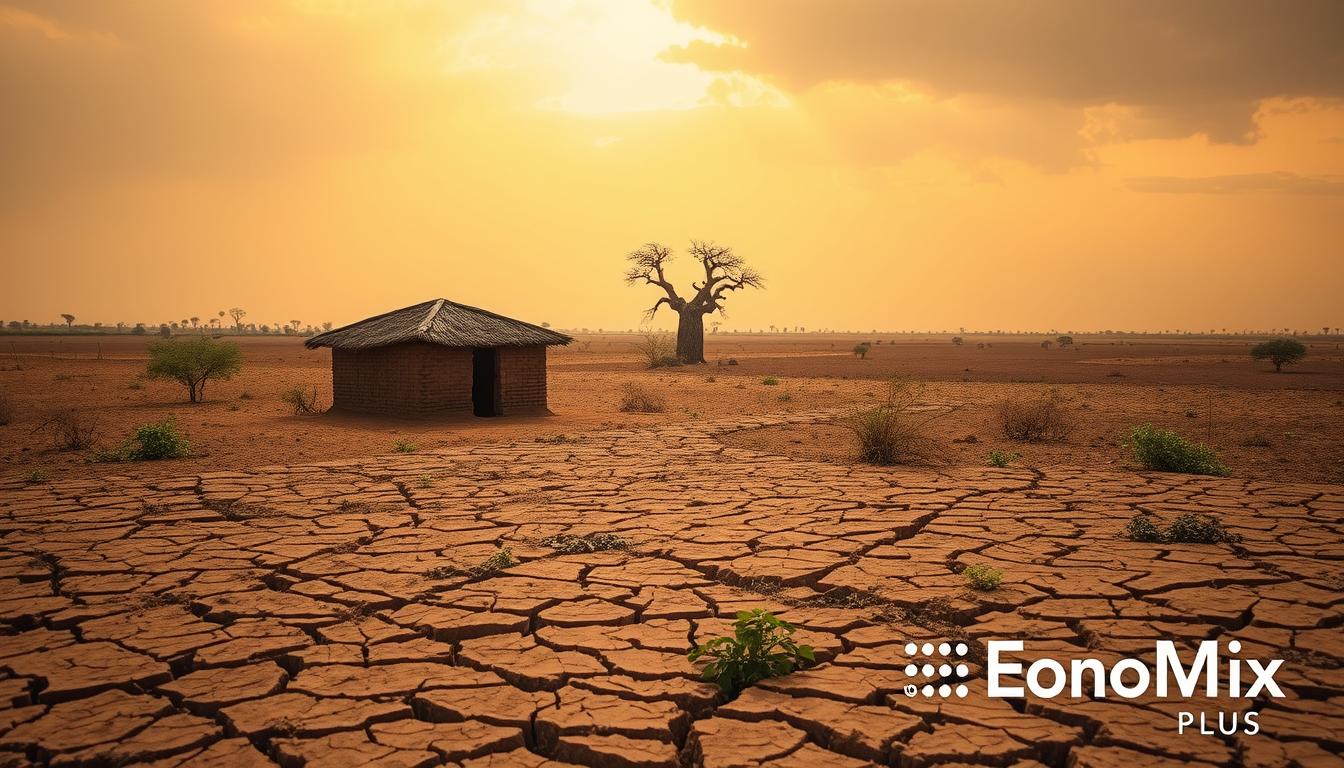
Northern Mali exemplifies the crisis. The Sahara advances southward at 48 km/year, swallowing 100,000 hectares of arable land annually. Herders report water sources drying up 40% faster than two decades ago. Climate change compounds existing vulnerabilities—when 2022 floods destroyed 62,000 hectares of crops, food prices spiked 27% nationwide.
Three critical patterns emerge:
- Growing seasons shortened by 35 days since 1975
- 90% of Lake Faguibine evaporated since 1974
- Extreme heat days (>45°C) tripled since 2000
“The Sahel’s climate trajectory risks making Mali’s northern zones uninhabitable by 2040 without urgent adaptation measures.”
These environmental pressures ripple through society. Displaced farmers migrate to cities ill-equipped for population surges, while climate-driven conflicts over dwindling resources escalate. World Bank models predict climate change could slash Mali’s GDP by 11% by 2035 if current trends persist.
Institutional Weaknesses and Governance Challenges
Systemic gaps in Mali’s public institutions undermine efforts to stabilize its economy. World Bank assessments reveal bureaucratic delays add 18 months to infrastructure projects, while 40% of approved budgets never reach implementation. These inefficiencies stem from overlapping mandates and outdated procedures—key factors eroding public trust. Moreover, the lack of coordination among various governmental bodies leads to confusion and wasted resources, further exacerbating the situation.
Citizens often express frustration over the slow pace of development, which not only hampers economic growth but also fuels discontent and undermines faith in governance. This environment of mistrust makes it increasingly difficult for the government to implement effective policies or engage citizens in meaningful dialogue about their needs and priorities.
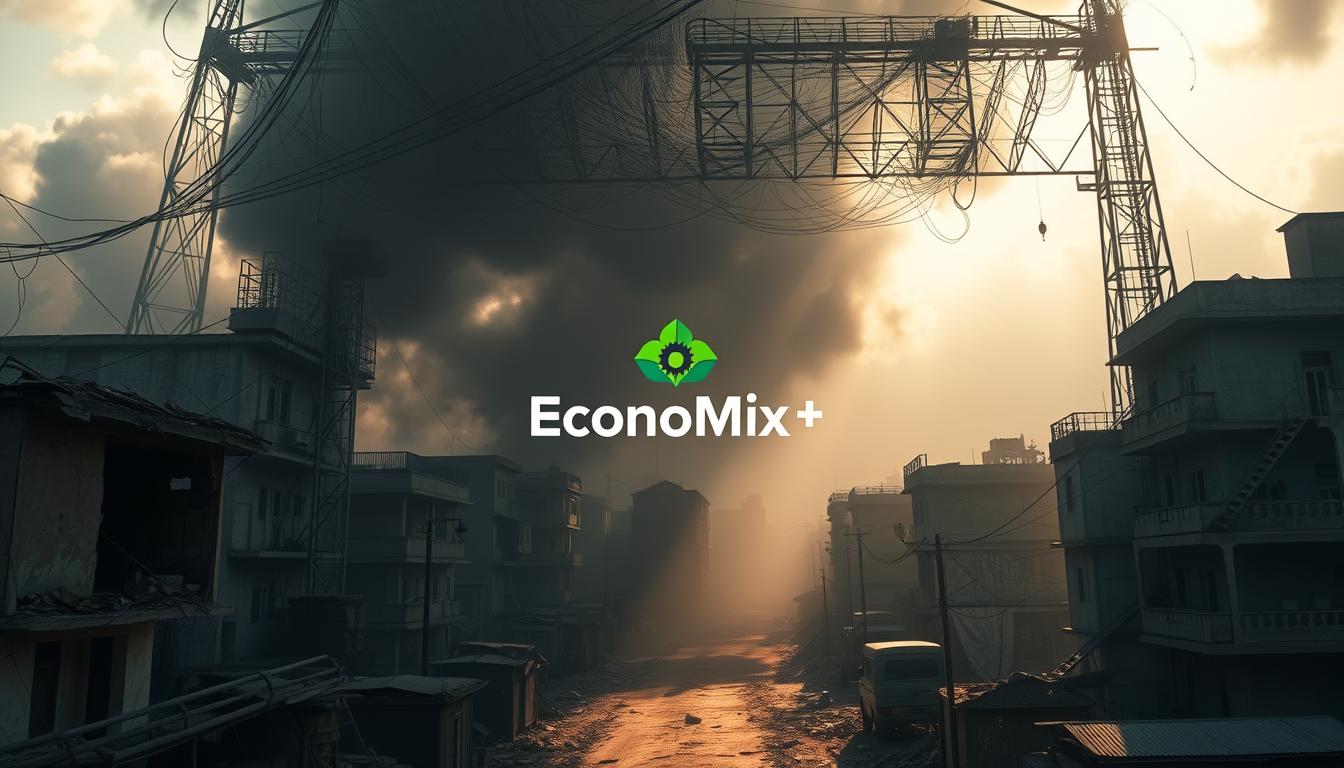
Administrative Bottlenecks
Mali’s civil service operates with 60% vacancy rates in technical roles, per IMF data. Critical decisions often require approval from 5+ departments, creating gridlock. A 2022 audit found 68% of local governance offices lack basic digital tools, forcing reliance on paper-based systems prone to errors.
Reform Roadblocks
Political parties frequently block modernization efforts to protect patronage networks. A 2019 anti-corruption initiative recovered only 15% of misused funds due to weak enforcement. Governance experts note reforms stall when they threaten elite interests—as seen in failed 2021 tax code revisions.
“Mali’s institutions need root-and-branch restructuring. Current systems prioritize crisis response over prevention, worsening long-term fragility.”
Three urgent actions could break this cycle:
- Streamlining land registration to resolve 80,000 pending property disputes
- Creating independent oversight for $2.3 billion in annual development funds
- Training 5,000 local officials in conflict-sensitive resource management
Justice sector improvements remain vital. Only 12% of citizens trust courts to resolve business conflicts fairly, hindering investment. Successful negotiations with northern communities in 2020 show localized solutions can work—when backed by consistent political will.
Trade Dynamics, Commodities, and the Informal Sector
Mali’s export economy hinges on two primary commodities: gold (75% of exports) and cotton (15%), according to African Development Bank data. These sectors employ 28% of the workforce but remain vulnerable to global price shifts. A 2023 AfDB report shows 60% of agricultural exports lack value-added processing, mirroring patterns seen in other African countries.
The informal economy accounts for 43% of GDP—one of West Africa’s highest rates. Street vendors, artisanal miners, and small farms operate outside formal regulations, creating these challenges:
- Tax collection covers only 12% of potential revenue
- 85% of cross-border trade goes unrecorded
- Limited access to credit stalls business growth
| Export Sector | Contribution | Key Challenge |
|---|---|---|
| Gold | $4.7B annually | Price volatility |
| Cotton | $800M annually | Climate sensitivity |
| Livestock | $300M annually | Border restrictions |
Regional trade agreements struggle to gain traction. Only 22% of Malian businesses participate in ECOWAS markets, compared to 41% in neighboring African countries. The development bank attributes this to complex customs procedures and inadequate transport links.
“Formalizing Mali’s informal sector could unlock $900 million yearly for economic development, but requires targeted financial access programs.”
Mobile money adoption offers hope—37% of adults now use digital wallets, up from 9% in 2018. However, 63% of rural enterprises still rely entirely on cash transactions, limiting their expansion capacity.
Urbanization Trends and Demographic Shifts in Mali
Bamako’s skyline tells a story of transformation. The capital’s population surged from 1.8 million to 4.5 million in 20 years, mirroring nationwide urban growth rates exceeding 5% annually. United Nations projections indicate 55% of Malians will live in cities by 2035—a seismic shift for a country traditionally rooted in rural livelihoods.
Population Growth and Youth Dependency
With 48% of citizens under 15, Mali faces acute workforce pressures. Each year, 300,000 young people enter a job market creating only 35,000 formal positions. This imbalance forces many into informal working arrangements—85% of urban youth lack stable employment contracts.
Migration patterns reveal stark changes. Rural-to-urban movement increased 27% since 2015, driven by:
- Droughts reducing agricultural yields by 40% in southern regions
- Education access gaps—only 12% of rural schools offer secondary curricula
- Healthcare disparities with urban centers having 3x more medical staff
“Urban expansion outpaces infrastructure development. Mali needs 50,000 new housing units annually but currently builds 8,000.”
These shifts strain municipal resources. Over 60% of Bamako residents lack reliable water access, while traffic congestion costs the economy $120 million yearly. Policymakers now prioritize:
- Expanding vocational training for 500,000 youth by 2027
- Upgrading 200km of urban roads in the next 3 years
- Implementing digital platforms for streamlined service access
The country’s future hinges on converting demographic challenges into opportunities. Successful models like Sikasso’s youth entrepreneurship hubs—creating 15,000 working roles since 2020—show potential pathways forward.
Regional Instability and Geopolitical Factors
Northern Mali’s vast desert landscapes mask a complex web of security threats that destabilize the entire Sahel. Recent analyses by Ba (2021) reveal conflict zones now control 35% of the territory, disrupting trade corridors to Algeria and Mauritania. Armed groups like JNIM and ISGS exploit porous borders, launching 47 cross-border attacks in 2023 alone according to UN peacekeeping reports.
This volatility creates economic paralysis. The tri-border area linking Mali, Burkina Faso, and Niger suffers 68% reduced commercial activity since 2020. Transporting goods from Bamako to Gao now takes 14 days instead of 3 due to conflict-related checkpoints. Tariff & Grand’s 2021 study documents $900 million in annual trade losses from these disruptions.
“Geopolitical tensions transform northern Mali into a pressure cooker. Without coordinated regional strategies, instability will keep spilling into coastal West African states.”
Three critical spillover effects emerge:
- Refugee flows strain neighboring nations—450,000 Malians sought shelter abroad since 2020
- Weapons smuggling networks supply groups operating in Nigeria and Cameroon
- Climate migrants from drying Lake Chad basin clash with local groups over resources
Addressing these challenges requires innovative diplomacy. Successful 2022 intelligence-sharing agreements between G5 Sahel nations reduced extremist attacks by 22% in six months. Community-led disarmament programs in Mopti region show localized solutions can complement broader reforms.
International Development Efforts and External Partnerships
Global institutions have become key architects in Mali’s reform landscape. The World Bank allocated $1.2 billion since 2020 for infrastructure and social programs, including a $150 million initiative to modernize agricultural value chains. This funding supports 300,000 smallholder farmers through climate-resilient techniques and market access improvements.
Multilateral partners address governance gaps through targeted interventions. The United Nations’ Peacebuilding Fund finances community reconciliation projects in conflict zones, training 1,200 local leaders in dispute resolution since 2021. Simultaneously, the African Development Bank’s Desert-to-Power initiative brings solar energy to 500 rural health centers, enhancing service delivery.
“Strategic partnerships enable Mali to leverage external expertise while building domestic capacity. Our joint programs show measurable progress in fiscal transparency and resource management.”
Key achievements demonstrate this collaborative approach:
- Digital land registry systems covering 18 districts, reducing property disputes by 40%
- Vocational training centers creating 25,000 jobs in renewable energy sectors
- Mobile banking penetration reaching 43% of adults through partner-backed fintech reforms
The United Nations Development Programme channels 62% of its Mali budget through local NGOs, strengthening grassroots institutions. These development projects offset critical weaknesses—external audits now monitor 78% of public contracts compared to 33% in 2018. While challenges persist, international alliances provide essential scaffolding for systemic change.
Sectoral Analysis: Agriculture, Mining, and Manufacturing
Mali’s economic pillars face mounting pressures from environmental and operational challenges. African Development Bank reports reveal agriculture contributes 40% of GDP but suffers 35% post-harvest losses due to inadequate storage. Cotton production fell 28% in 2023 amid erratic rainfall, while artisanal gold mining employs 2 million but operates with outdated techniques.
Resource Management and Productivity Gaps
Agricultural projects like the $120 million Climate-Smart Irrigation Initiative aim to boost yields. However, only 12% of farms use modern tools—a key factor limiting growth. Mining sector reforms face hurdles: 65% of gold extraction occurs through informal channels, causing $300 million in annual revenue leaks.
Manufacturing remains underdeveloped at 6% of GDP. UNCTAD data shows 80% of raw cotton exports bypass local processing. Recent services innovations include mobile platforms connecting 150,000 farmers to markets. These adaptations address logistical barriers but require scaling.
“Solar-powered processing units increased shea butter production by 40% in southern Mali. Such power solutions demonstrate how tech can transform traditional sectors.”
Three critical causes hinder progress:
- Energy deficits shut down 30% of manufacturing plants weekly
- Only 8% of mining firms use pollution control systems
- Extension services reach just 22% of rural producers
Renewable energy projects now target these gaps. The Bamako Solar Farm supplies 15% of the capital’s power needs, while microgrids support 200 agro-processing centers. These interventions highlight pathways to stabilize Mali’s core sectors amid mounting pressures.
Comparing Current Path and Future Economic Scenarios to 2043
Projections for Mali’s economic trajectory reveal stark contrasts between stagnation and transformation by 2043. IFs modeling shows a business-as-usual path yielding 3.1% annual GDP growth, barely outpacing population increases. Under this scenario, 52% of citizens would lack electricity access in 20 years, perpetuating current inequalities.

Ambitious reforms could unlock faster progress. A combined sectoral strategy—prioritizing agro-processing and renewable energy—might accelerate growth to 6.8% annually. This approach would require $4.2 billion in infrastructure investments over 15 years, according to IFs simulations.
| Indicator | Current Path (2043) | Reform Scenario (2043) |
|---|---|---|
| GDP per Capita | $1,210 | $2,900 |
| Formal Employment | 18% workforce | 34% workforce |
| Secondary Education Access | 41% youth | 78% youth |
| Healthcare Coverage | 55% population | 89% population |
Three drivers differentiate these outcomes:
- Digital infrastructure expansion could connect 85% of rural enterprises to markets by 2035
- Mineral revenue reinvestment in vocational training might create 450,000 skilled jobs
- Climate-smart agriculture adoption could boost farm incomes by 140%
IFs data highlights critical development thresholds. Achieving middle-income status requires sustained 5% growth for 12 consecutive years—a feat last accomplished in 2004-2011. Strategic policy shifts before 2030 prove most impactful, with each year of delay reducing 2043 GDP projections by 2.3%.
Lessons Learned from Mali’s Fragility Case Study
Decades of cyclical crises reveal critical lessons for nations grappling with resource wealth and instability. Three primary causes emerge from Mali’s experience: fragmented governance, climate vulnerability, and reliance on unprocessed exports. These factors create a self-reinforcing cycle where short-term survival overshadows long-term planning.
Koloma’s 2022 analysis identifies how violence compounds economic risks. The 2012 northern rebellion disrupted 80% of cross-border trade routes, while recent extremist attacks continue displacing 500+ citizens weekly. Such events demonstrate how security gaps undermine development investments.
| Root Cause | Impact | Recommended Action |
|---|---|---|
| Conflict Zones | 35% territory uncontrolled | Community-led disarmament programs |
| Institutional Gaps | 40% budget leakage | Digital fund tracking systems |
| Export Dependency | $220M gold revenue loss (2023) | Agro-processing incentives |
Systemic change requires addressing interconnected challenges. Artisanal mining reforms in 2021 boosted formal sector participation by 18%, showing how policy adjustments can create balance between informal traditions and modern practices.
Four actionable insights emerge:
- Integrate climate adaptation into infrastructure projects
- Prioritize vocational training for conflict-affected youth
- Strengthen regional trade partnerships to reduce export risks
- Implement transparent mineral revenue sharing mechanisms
These lessons highlight the need for coordinated change across sectors. As Mali’s case demonstrates, economic resilience demands equal attention to governance reforms and community-level capacity building.
Sustainable Development Strategies for Economic Resilience
Building a resilient economy requires targeted strategies that address systemic weaknesses while leveraging existing strengths. Recent IFs modeling identifies three priority areas: agricultural modernization, renewable energy adoption, and institutional capacity building. These actions could boost GDP growth by 4.2% annually if fully implemented by 2030.
Successful projects in neighboring countries offer proven templates. Niger’s solar-powered irrigation systems increased crop yields by 55%, while Senegal’s vocational training hubs reduced youth unemployment by 18%. Adapting these working models could unlock similar benefits across Mali’s rural regions.
| Strategy | Action | Potential Impact |
|---|---|---|
| Climate-Smart Farming | Deploy drought-resistant seeds | 40% yield increase |
| Mineral Revenue Reinvestment | Fund vocational centers | 200,000 skilled jobs |
| Digital Governance | Launch e-tax platforms | 25% revenue boost |
“Strategic investments in renewable energy and food processing could transform Mali’s economic landscape within a decade.”
Four critical actions form a viable roadmap:
- Expand solar microgrids to power 500 agro-processing plants
- Establish community savings cooperatives (non-interest based)
- Implement blockchain systems for mining revenue tracking
- Train 10,000 farmers in climate adaptation techniques
These strategies align with Mali’s potential to become a regional green energy hub. Recent pilot projects show promise—the Kayes solar farm now supplies 18% of local energy needs while creating 1,200 working roles. Scaling such initiatives could reduce import dependency by 32% within five years.
Policy Recommendations and Strategic Actions for Reform
Addressing Mali’s economic challenges demands immediate action paired with systemic reforms. Collaborative efforts between the government and international partners must prioritize stability while building climate-resilient infrastructure.
Short-Term Stabilization Measures
Critical first steps focus on crisis mitigation:
- Establish emergency task forces to secure agricultural trade routes
- Expedite World Bank-backed road projects in Western and Central Africa corridors
- Launch UN-supported cash-for-work programs for displaced farmers
Long-Term Transformation Plans
Sustained progress requires institutional overhauls:
- Adopt IMF-recommended fiscal transparency protocols by 2026
- Triple vocational training capacity using World Bank funding models
- Implement United Nations-guided anti-corruption frameworks
“Reforms must address both symptoms and root causes. Mali’s 2024 governance scorecard shows 63% improvement potential through digital public service systems.”
The government should prioritize renewable energy partnerships, mirroring successful United Nations solar initiatives in neighboring states. Combined with land tenure reforms, these actions could unlock $1.2 billion in annual economic potential by 2030.
Conclusion
Addressing Mali’s economic challenges requires immediate, coordinated action across sectors. The nation’s resource wealth – from gold reserves to fertile lands – clashes with systemic vulnerabilities like poverty rates exceeding 40% and recurring climate shocks. Governance gaps amplify these pressures, with 68% of crisis funds diverted before reaching intended communities.
Projections through 2043 reveal stark possibilities. Without reform, 52% of citizens could lack electricity access while per capita GDP stagnates below $1,200. Strategic investments in climate-smart agriculture and renewable energy could triple economic output, creating 450,000 skilled jobs. Regional partnerships prove vital – 22% fewer extremist attacks occurred after 2022 intelligence-sharing agreements.
Three priorities demand attention:
- Modernizing land registries to resolve 80,000 property disputes
- Expanding solar microgrids to power agro-processing hubs
- Implementing IMF-backed fiscal transparency protocols by 2026
The African Development Bank estimates targeted reforms could unlock $1.2 billion in annual growth. Success hinges on aligning international support with grassroots needs – a balance demonstrated by vocational programs boosting youth employment by 18%. Mali’s path forward lies in transforming vulnerabilities into opportunities through sustained, inclusive development strategies.
